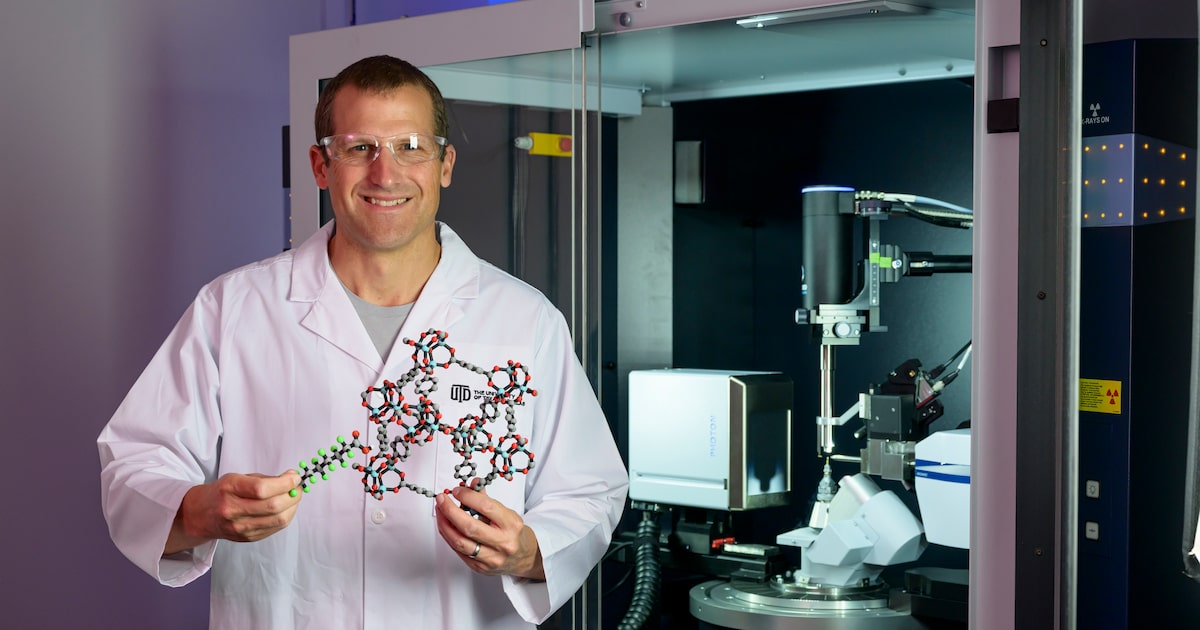This week, the 2025 Nobel Prize in chemistry went to a trio of scientists for pioneering metal–organic frameworks, or MOFs for short.
The Nobel committee likened MOFs to “rooms in a hotel” that tiny molecules can enter and leave. Scientists Susumu Kitagawa, Richard Robson and Omar Yaghi, who won the award, established the field in the late 1980s. Their work set off a boom in research around the world, including at North Texas institutions like the University of Texas at Dallas.
“I don’t think the people who started this would have imagined that you’d be making polymers and vaccines and doing water purification with MOFs,” said Ronald Smaldone, an associate professor of chemistry and biochemistry at UT Dallas. “But here we are.”
What is a MOF?
Breaking News
MOFs are Lego-like structures at the atomic scale. They’re made up of metal and carbon-based links that snap together in repeating patterns, creating 3D caverns filled with pores of different sizes and shapes.
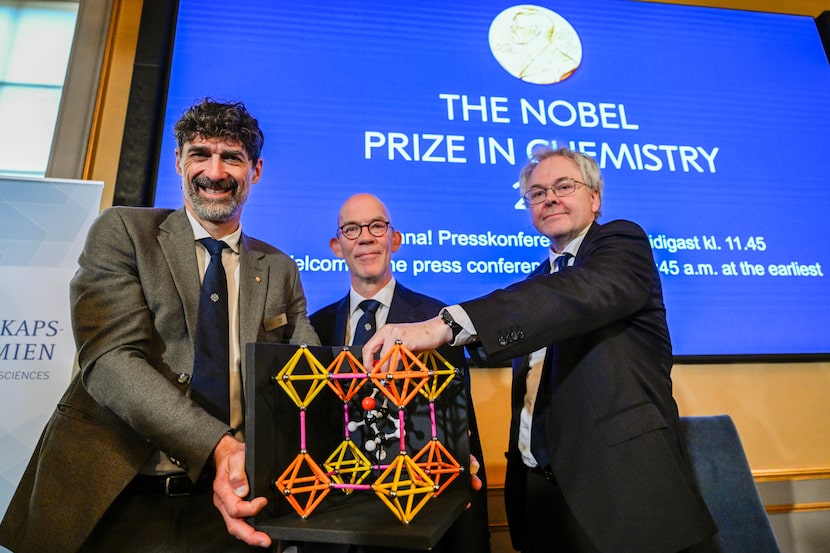
From left, Chair of the Nobel Committee for Chemistry Heiner Linke, Secretary General of the Swedish Academy of Sciences Hans Ellegren, and Member of the Nobel Committee for Chemistry Olof Ramstrom pose after announcing Susumu Kitagawa, Richard Robson and Omar Yaghi as the recipients the Nobel Prize in Chemistry, at the Nobel Assembly of the Karolinska Institutet, in Stockholm, Sweden, Wednesday, Oct. 8, 2025.
Fredrik Sandberg / AP
Early research cast MOFs as tanks for energy-related gases such as hydrogen and methane, Smaldone said. Since then, these “super sponges” have been used for batteries, supercapacitors and fuel cells, where their vast internal space lets ions move faster and easier and their adaptable designs let chemists modify the molecular storage space.
PFAS begone
To Mario Wriedt, an associate professor of chemistry and biochemistry at UT Dallas, the promise of MOFs goes beyond batteries: These 3D “rooms” may be a key to trapping per- and polyfluoroalkyl substances, also known as PFAS.
PFAS are a large family of artificial “forever chemicals” that can take up to several thousand years to break down. Used across countless consumer, commercial and industrial products, PFAS show up nearly everywhere — water, air, soil, wildlife, even in people. Exposure to some PFAS has been linked to harmful health effects in both humans and animals.
Wriedt’s group at UT Dallas is fine-tuning MOFs to snag PFAS more efficiently. They’re doing so by tailoring pore sizes on the MOFs and adding chemical “handles” that latch onto PFAS and hold them tight.
“We have a handful of MOFs in the lab which are outperforming any state-of-the-art material out there,” said Wriedt. “So record PFAS removal capacity [and] ultra-fast removal that happens in seconds.”
The long-term vision is to create water purification systems with a MOF layer that scrubs whatever slips through. Wriedt also envisions portable MOF-based tests that crews could use to check water quality in the field, especially in situations where water contamination with PFAS may occur, such as after firefighting.
Boost the immune system
Some MOFs can carry vital medicines and vaccines, nudging the immune system in the right direction with their metals.
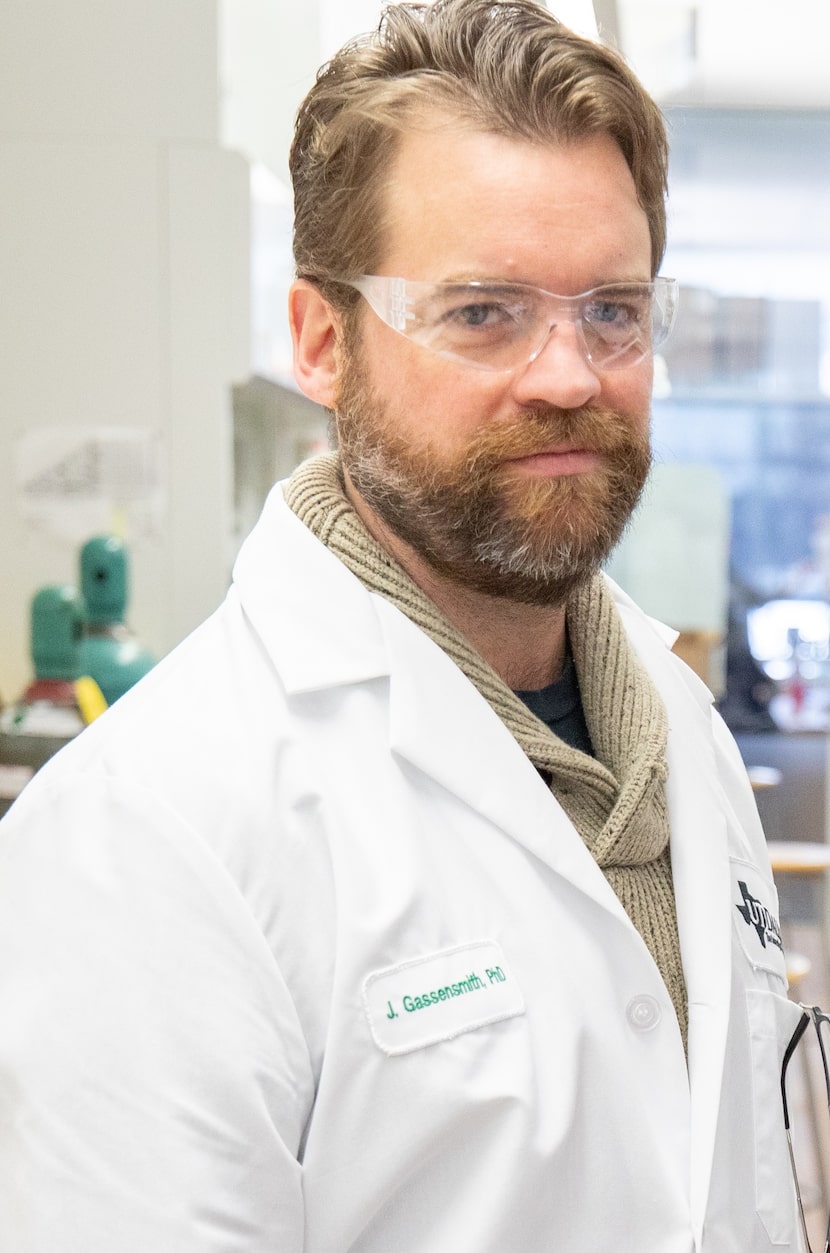
Jeremiah Gassensmith is an associate professor of chemistry and biochemistry at UT Dallas.
UT Dallas
“We know that metals are an important part of the immune system,” said Jeremiah Gassensmith, an associate professor of chemistry and biochemistry at UT Dallas. Because scientists can change the metals in MOFs, he added, there are “endless possibilities” in tuning that system.
At Gassensmith’s lab, MOFs made of zinc are used as protective shells for proteins that go into vaccines. The MOF preserves the protein from degradation and tough conditions, such as high temperatures, and the zinc boosts the immune system’s response to the protein.
Gassensmith, who worked with Nobel laureate Omar Yaghi while at Northwestern University, is developing MOF-based vaccines for recurrent urinary tract infections and MOF-based treatments for tuberculosis.
His lab has already tested a way to deliver MOF-based vaccines with a puff of pressurized air. This method could one day be an alternative for those afraid of needles.
Related
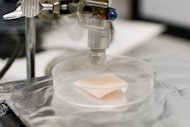 Breathe easy
Breathe easy
Like Wriedt, Smaldone is focused on capturing harmful chemicals with MOFs — but also destroying them.
His team is 3D printing polymers loaded with MOFs to create materials capable of trapping airborne toxins and breaking them down.
“Right now, we’re working with the Army to develop filters that can degrade things like toxic chemicals or chemical warfare agents,” Smaldone said. “So you can make these into a mask or some kind of filter.”
Beyond military use, Smaldone said the MOF polymers could help tackle air pollution — whether through a mask, ventilation filter or a standalone device. This effort could reduce chronic exposure that can worsen asthma and, over time, raise cancer risk.
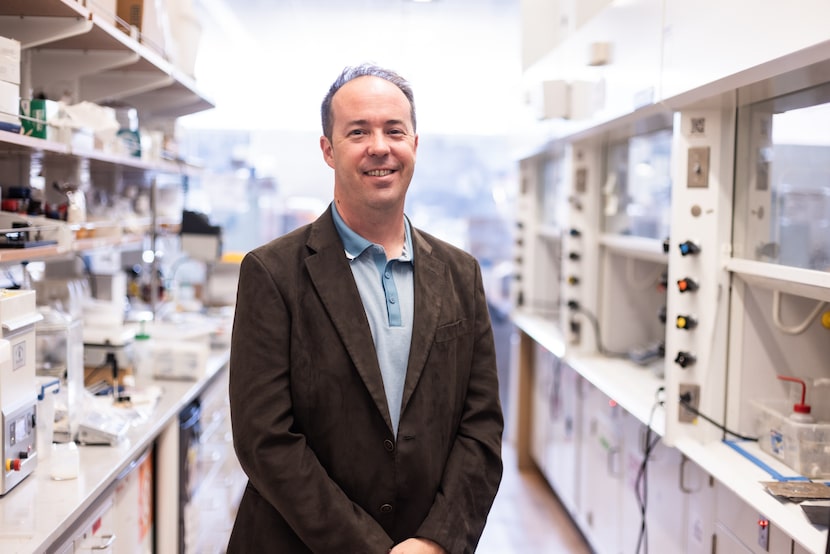
Ronald Smaldone is an associate professor of chemistry and biochemistry at UT Dallas.
sarah wall
For Smaldone, who also worked with Yaghi, current research into MOFs underscores the importance of curiosity as the starting point for scientific inquiry.
“Early on, the Yaghi, Robson and Kitagawa groups were just interested in studying coordination chemistry and figuring out ways to make materials,” he said of the Nobel winners. “Basic research is super important because there’s no way to know what direction it might go. Here we are mixing a few molecules together, and now we’re making vaccines, filters and polymers.”
Miriam Fauzia is a science reporting fellow at The Dallas Morning News. Her fellowship is supported by the University of Texas at Dallas. The News makes all editorial decisions.

